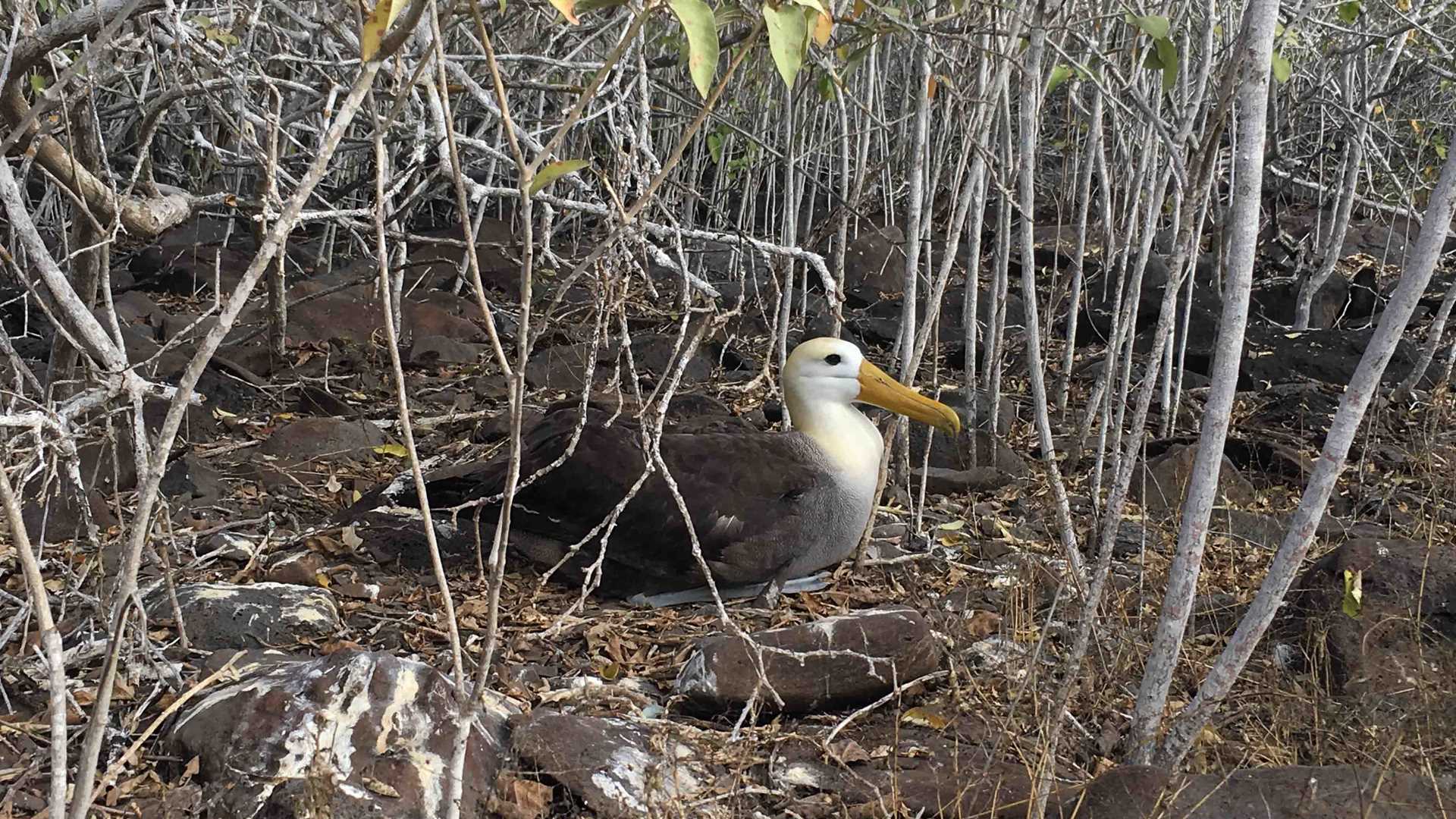Today we officially started our expedition on one of the oldest islands of the Galápagos: Española Island is estimated to be 4.5 million years old, far away from the hotspot and almost totally flat due to the erosion because of the wind and waves. This place is home to the only tropical albatrosses in the world – the waved albatross – which is endemic to the island of Española. While endemic, we can only find them here from April to middle January, so we are on the perfect time of the year to observe and learn of their amazing behaviors.
In the morning we woke up anchored in Gardner Bay. We had a delicious breakfast followed by our snorkeling safety talk, our guests were able to choose between deep-water and beach-side snorkeling as well as kayaking. Our morning was all about water activities, and guests couldn’t believe the experiences before them, especially with the very playful sea lions filling the beach as they swam and played beside our young Global Explorers. After lunch, guests had the opportunity to learn some photo tricks from our photo instructor while our young explorers had a get-to-know-you activity to meet each other.
After a short navigation we arrived at Punta Suarez, still in Española but in a different location. Our guests were thrilled with the marine iguanas, Nazca and blue-footed boobies, waved albatrosses, Darwin finches, Galapagos doves, the Galapagos hawk, the latter of which being the biggest predator in the Galapagos, and many other species that are not only unique to the Galapagos but also unique to this particular island. Española is definitely a jewel of the crown – what an amazing day we had!









